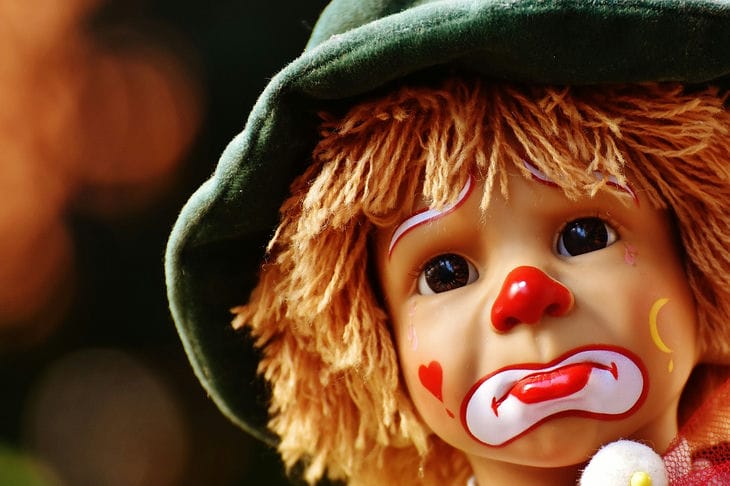All people are afraid of the unknown, and children especially. However, it cannot be said that the fears have the same level and background.
Not all children are afraid and not always. And in this field, risks can be reduced if you know and understand them.
Clowning originated 2-3 centuries ago as a circus genre of eccentricity and buffoonery in London comedy and farce theaters, partly thanks to the work of the English comedian J. Grimaldi.

Short comic scenes attracted the public's attention in contrast to "serious" drama or the viewing of trained animals.
Moreover, initially, clown shows were intended specifically for adults who understood the sarcasm hidden behind the hints. In essence, this is an art, one of the brightest representatives of which was C. Chaplin.
Children's preferences or fears are directly related to the lack of understanding of sarcasm and external forms (coloring), typical for clowning. And also with the lack of experience of associative thinking in childhood.
As for real and everyday communication, the child is accustomed to dealing with natural visualization, and even “Santa Claus” is suspected of insincerity already at the age of 3-4 years, especially when the stirrups from dad’s underpants stick out at the bottom of his fur coat.
And if everything is more or less clear to children with the traditional New Year character, then the greatest influence in evaluative judgments is exerted by children's fears of the unknown character, his unpredictability, says psychologist Andrei Kashkarov .
Bright face paint, sometimes contradictory and irrational (large nose and mouth, “non-union” eyebrows, protruding onto the forehead), disproportionate forms in clothing and special facial expressions, coupled with the recitation of short monologues and dialogues, along with the clearly buffoonish behavior of clowns can cause misunderstanding and even rejection of children at a certain age.
A child's fear of clowning arises from the discrepancy between what is visible and what is expected.
Changing children's consciousness and perception is achieved through exercises and training. If clowns were given the same attention in social communication at home and in preschool educational institutions as other characters adapted to the child's psychological perception - hedgehogs and Santa Clauses - then fears would go away quite quickly, and the presence of clowns in life would become a habit.
Therefore, one of the effective and reasonable ways in raising a child with the aim of alleviating his fears is frequent stories and demonstrations of clowns at home in the form of preliminary preparation.
And also an explanation of who, when, and why acts as clowns.
If the essence of the phenomenon is explained to the child in a timely manner - that the "funny guy" - the clown works for him, and not the other way around - to scare, provoke negative emotions or tease, then the child will better understand the theatrical performance and may even want to participate in it, for example, by entering into a dialogue or hitting the clown on the cap with a foam stick.
Figuratively speaking, if at home a father “works” for his children as a clown – at least in the evenings and even for a limited time after his main job of earning all the money in the world on the side, then such a child will not develop a fear of a clown and this genre, including circus art, even in non-home conditions.
